Piecing together a project timeline template usually involves a Google Doc and mediocre formatting skills. Then comes assigning tasks to teammates and promising to hit the agreed-upon delivery date. But a few weeks go by, and the timeline falls apart. Higher priorities pop up, and deadlines slip past without much progress.
Projects can fail for many reasons: a lack of support from leadership, unforeseen budget cuts, or overpromising outcomes. In fact, poor project management is more common than you think – only 55% of projects are completed on time.
But creating a timeline where everyone involved knows what they're working on and when it's due can help ensure your project doesn't creep past its original deadline. It's essential for keeping projects (and the people completing them) on track.
To make sure your next project stays on schedule, we'll cover how to set up a project timeline, the best templates to use, and a handful of examples to inspire your future scheduling.
Why Create a Project Timeline?
Time management is one of the top skills employers look for in candidates. Missed deadlines and rushed projects can set entire teams (and companies) behind schedule.
A structured project timeline offers more than brownie points from your boss. It can also:
- Bring leadership and structure to a project
- Outline what is being delivered, by when
- Share who is responsible for each task and sets expectations for the scope, quality, and delivery of work
- Show how the project outcome contributes to company goals
- Decrease risk by accounting for any changes to the project scope, budget, deliverables, or deadlines.
Ultimately, a project timeline makes it easier and more efficient to manage a project. But it's important to match the timeline structure to the project scope. Planning an editorial calendar for the quarter may take more time and effort than creating a marketing video for an upcoming product launch.
That's where the right template comes in.
Project Timeline Example
Without the right project timeline template, organizing a project can be a lot of manual work — not to mention the formatting mess once multiple people get their hands on it.
The ideal timeline brings direction to a project, yet is easily adaptable when changes arise. Here's a look at a project timeline for opening a new company office.
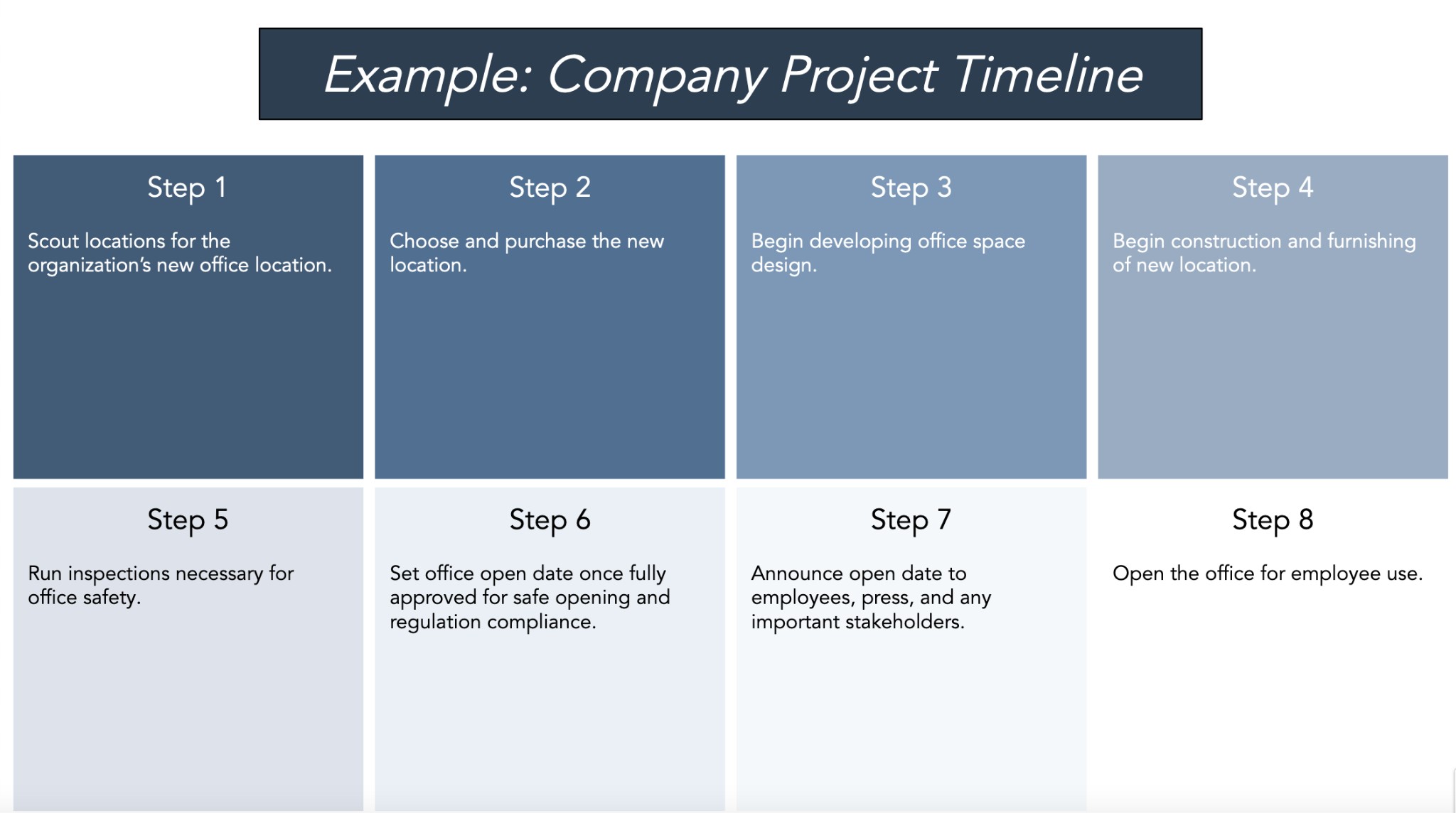
You can create a project timeline for any process that relies on a schedule (almost everything these days), like onboarding employees, handling a crisis, or planning social media campaigns. All you need to know is how to outline the steps of a project and the tasks required to complete each phase.
Let's get into the details.
How to Create a Project Timeline
Crafting the perfect project timeline takes strategy, organizational skills, and a whole lot of collaboration. You need buy-in from supporters and clear directives for everyone involved.
To get started, follow this step-by-step guide to set up a structured timeline — no matter your job, industry, or management level.
1. Write a project brief.
A project brief communicates how you will approach a project. It includes details on the goals, deliverables, timeline, tasks, process, people involved, and resources needed to take a project from start to finish.
Asana outlined the steps to create a simple, yet effective, project brief. You can use this free project plan template to outline the project's goals, roles and responsibilities, schedule, deliverables, budget, and more. It's a great starting point for any planning process.
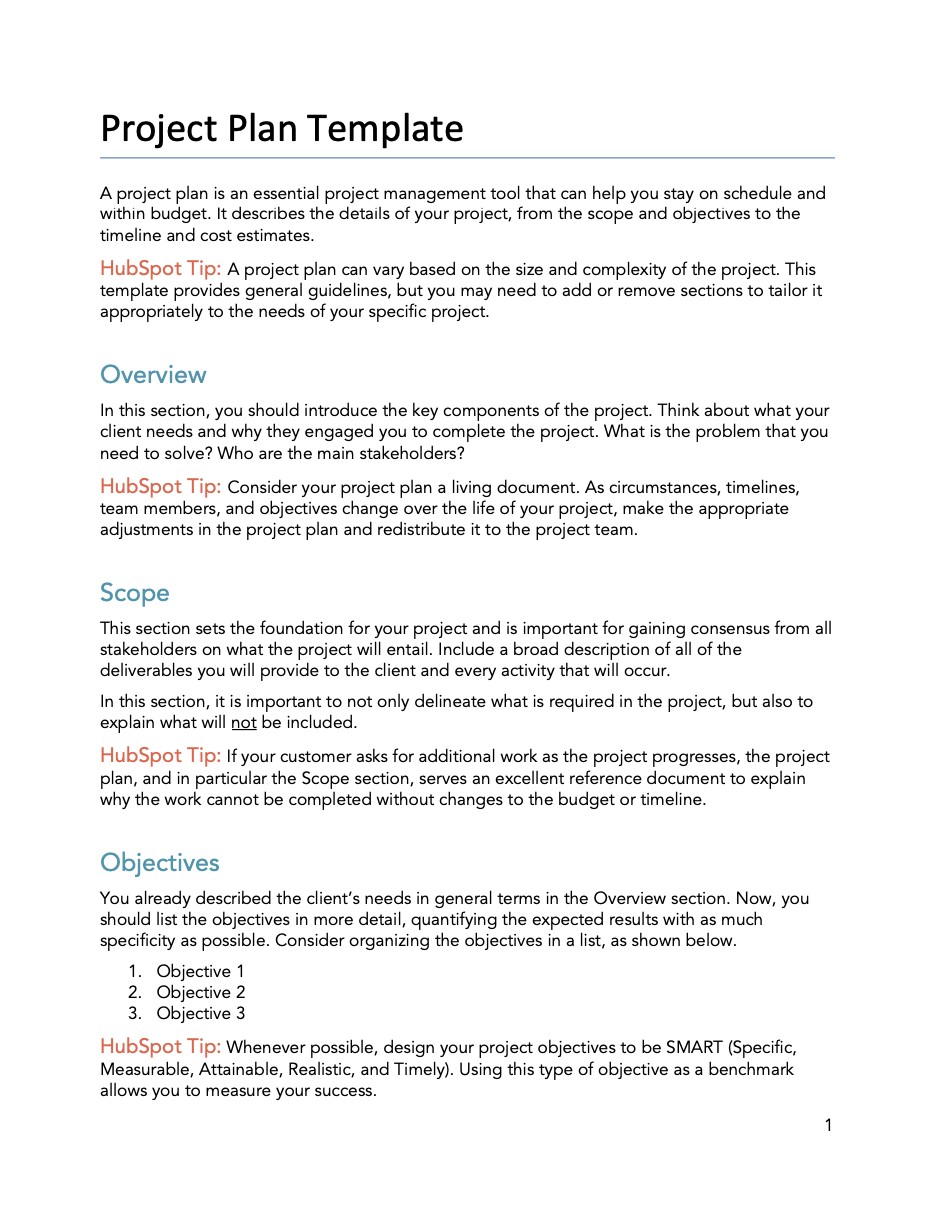
Or if you need a more comprehensive overview that includes key messaging and distribution processes, a creative brief may be the right fit for your project.
2. List all tasks and action items.
Every task involved in achieving a project's objectives needs to go into the project timeline. After creating the brief, make a list of these tasks. You can start with large tasks and break them down into smaller to-dos.
Let's say you're responsible for creating a marketing video to launch your company's newest product. Your list may include the following:
- Establish project leads from each department
- Set project budget
- Find a video production company
- Layout the video storyboard
- Choose main features for video
- Write video script
- Capture video content
- Add in sound and background music
- Add animations and graphics
- Edit video
- Write announcement copy
- Craft marketing campaign
- Create clips for social sharing
- Get video and marketing assets approved
Once you have the major milestones down, break down each task into smaller pieces. For example, choosing a video production company involves:
- Research video production companies
- Curate a list of production companies
- Get quotes from each production company
- Compare quotes and narrow down options
- Meet with the selected companies
- Choose a production company
- Finalize the contract
3. Connect dependencies.
In a project, certain tasks can't be started until another is complete. These tasks are called dependencies. For example, a video can't be filmed until the storyboard is finalized. And the storyboard can't be finalized until the video theme is chosen.
Mapping out dependencies helps you solidify the order of each task and decide who's responsible for what. Everyone will know what part of the project they're working on, which tasks must be completed before their own, and who to contact for the deliverables they need.
Here's a look at how dependencies can play out in a project timeline.
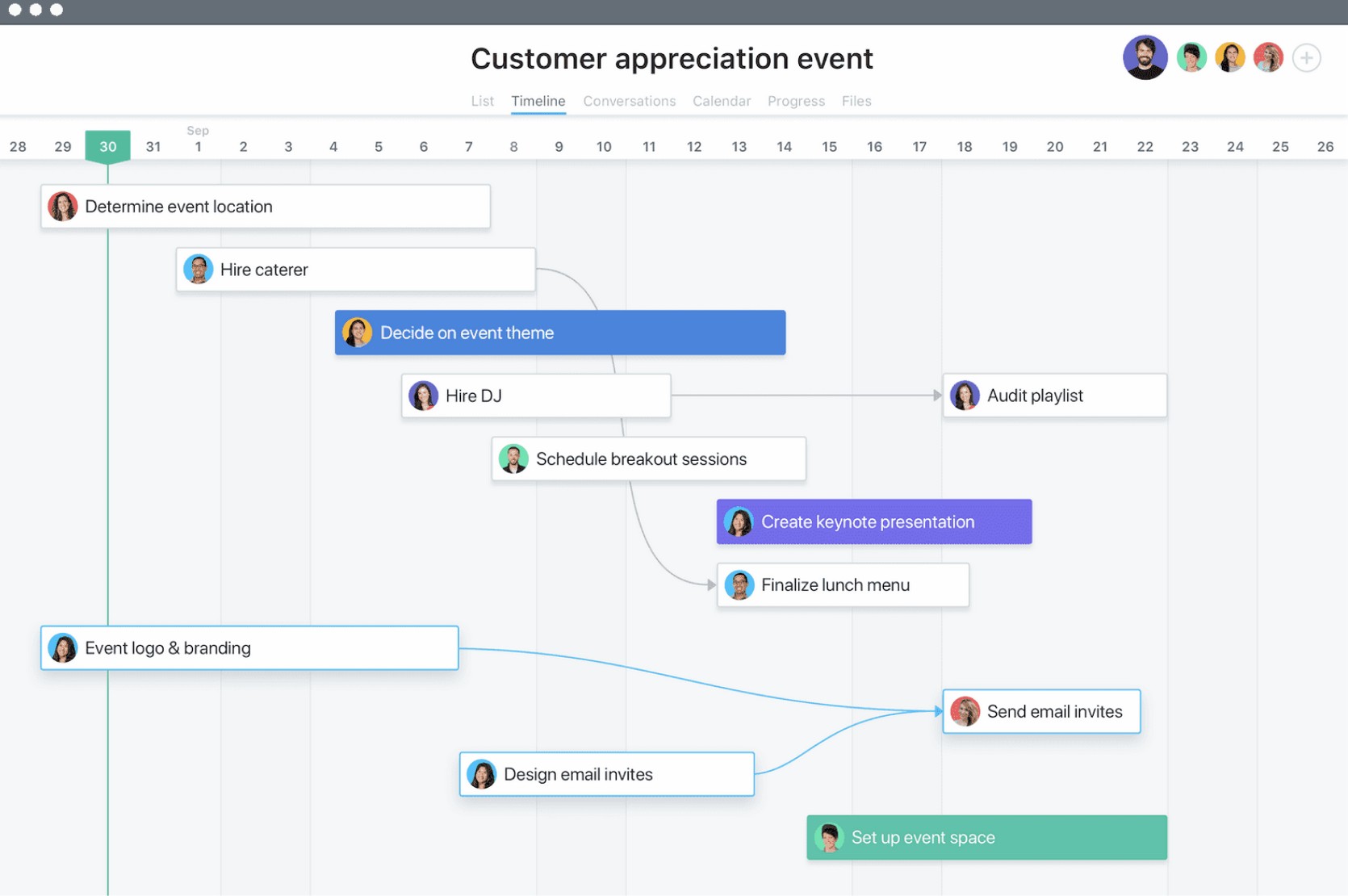
In the example, you can see that hiring a caterer has to happen before finalizing the lunch menu. But other tasks, like finding a DJ and deciding on an event theme, can happen at the same time. So as you map out each task, you'll have to see which steps can overlap and which need to wait for others.
4. Estimate the time it will take to complete each task.
Once you figure out the sequence of tasks, you need to figure out how much time each will take. Estimate as best you can. That way, it'll be easier to create the project roadmap and understand the project's overall time frame.
As you go, make sure to consider the other projects and priorities your team has going on. A designer may be able to come up with a rough draft of video animations in one week, but if they're wrapping up another project, they may not be able to start on yours for another two weeks.
Being mindful of your team's time will make it easier to put together a reasonable, reliable timeline.
5. Create the project timeline.
Build your timeline by organizing your tasks from the first to the final step. Make any necessary adjustments to the task times, add milestones, and solidify the deadline. If your team works with project management software, organize the timeline and tasks so it's ready to share after the project kickoff meeting.
You can save time during this step by using one of the project timeline templates below. It's simple to customize each and avoid the extra work of creating your own from scratch.
6. Share the timeline with the project team.
Whew, your timeline is complete! Now, you have to share it with stakeholders. This includes everyone who is involved in the project. You've already listed these people out in your brief (during step one), so it's time to share your clear path forward for the project with them.
It's a good idea to hold a project kickoff meeting with both stakeholders and individual contributors so everyone starts on the same page. You can communicate the project goals, deliverables, roles, and deadlines — without going into an overwhelming amount of detail. From there, you'll want to schedule time with the project's immediate contributors to chat specifics and answer any questions before the work begins.
Need help visualizing the entire project? It can help to include a timeline graphic like the one below to give everyone a sense of the overall time frame. You can add or remove steps, depending on the complexity of your project.
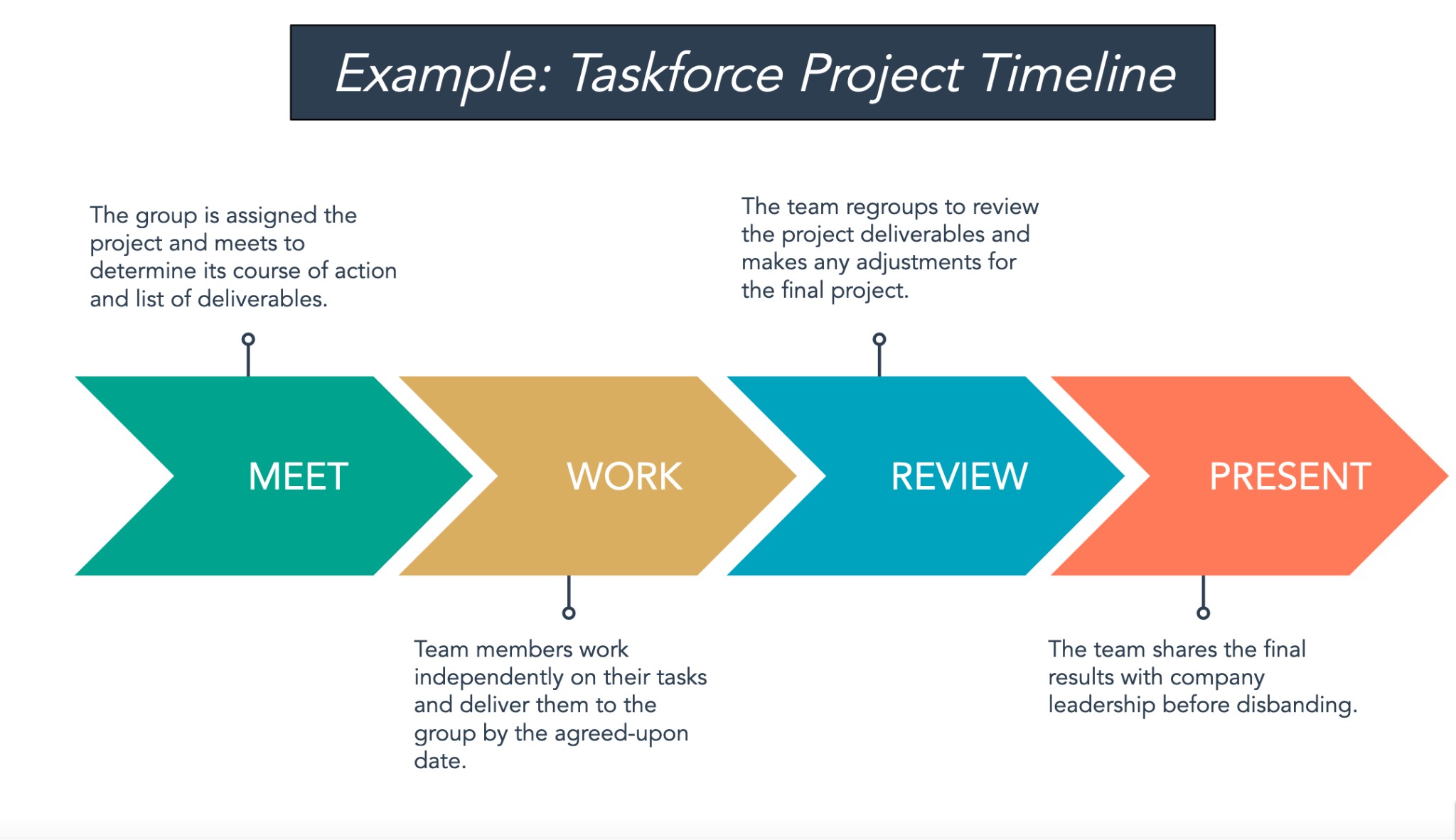
7. Adapt as you go.
Remember how just over half of projects are finished on time? Roadblocks and setbacks are inevitable in every project. So if your team runs into a delay, you'll have to understand the impact and adjust the timeline if necessary.
While it's possible to make up for delays without changing the final deadline, it's your job as the project owner to update stakeholders on the project's progress. Reporting a minor issue (like a coworker being out sick for a few days) isn't always necessary to higher-ups. But if it's a major roadblock that requires an extreme adjustment to the timeline (like a core contributor leaving the team), you have to communicate a new timeline to stakeholders.
Change is part of every company, so don't panic if you have to adjust your timeline. It's better to be transparent about the scope of work and timeline than keep people in the dark until the deadline hits. The earlier you adjust to change, the easier it will be to get back on track.
Project Timeline Examples
Visualizing a project makes it simple to understand what needs to happen from start to finish. Whether you need a template for a product launch or campaign meeting, these well-designed project timeline templates are perfect for your next planning session.
Employee Onboarding Timeline

Product Launch Timeline
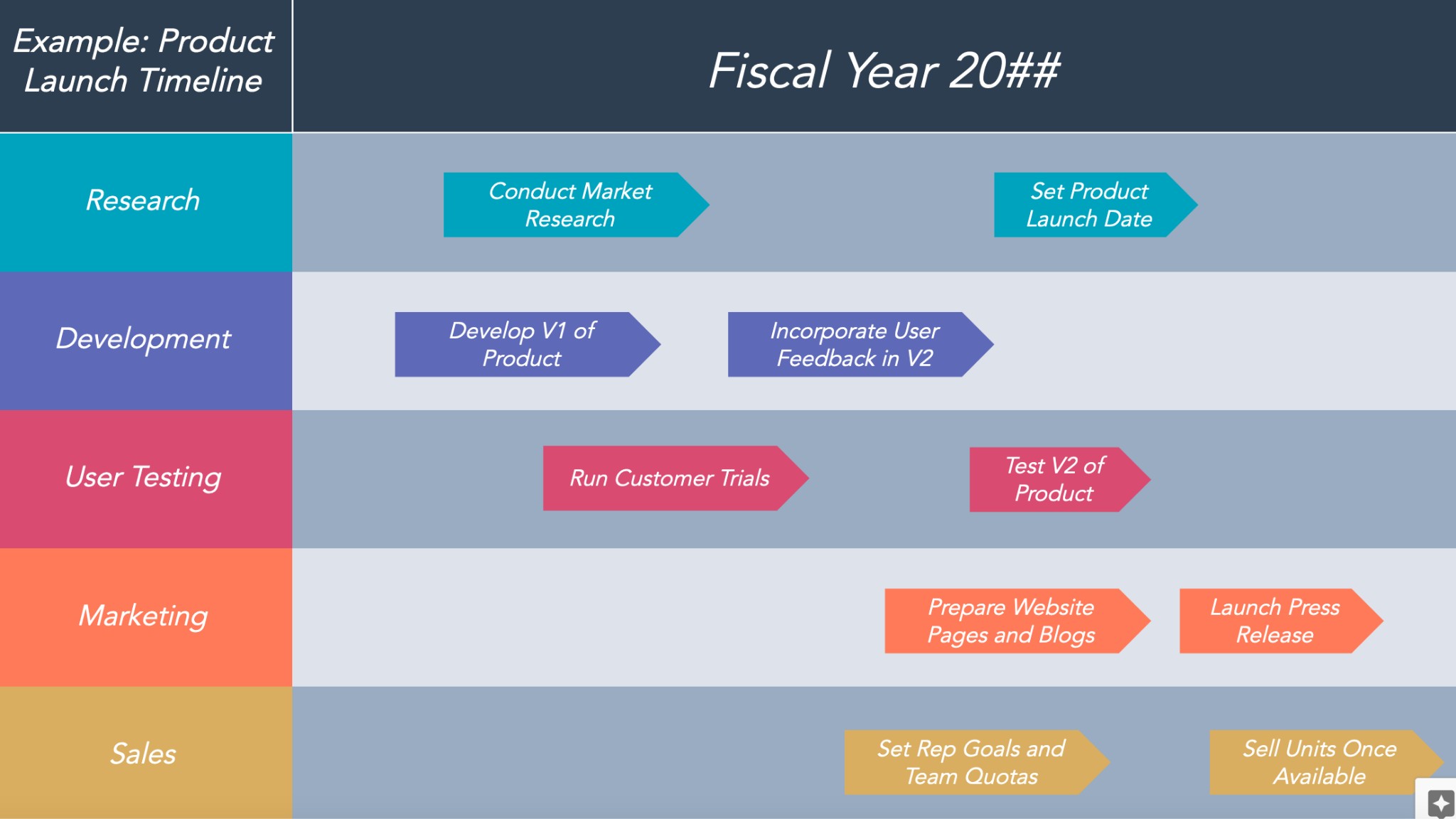
Crisis Response Project Timeline
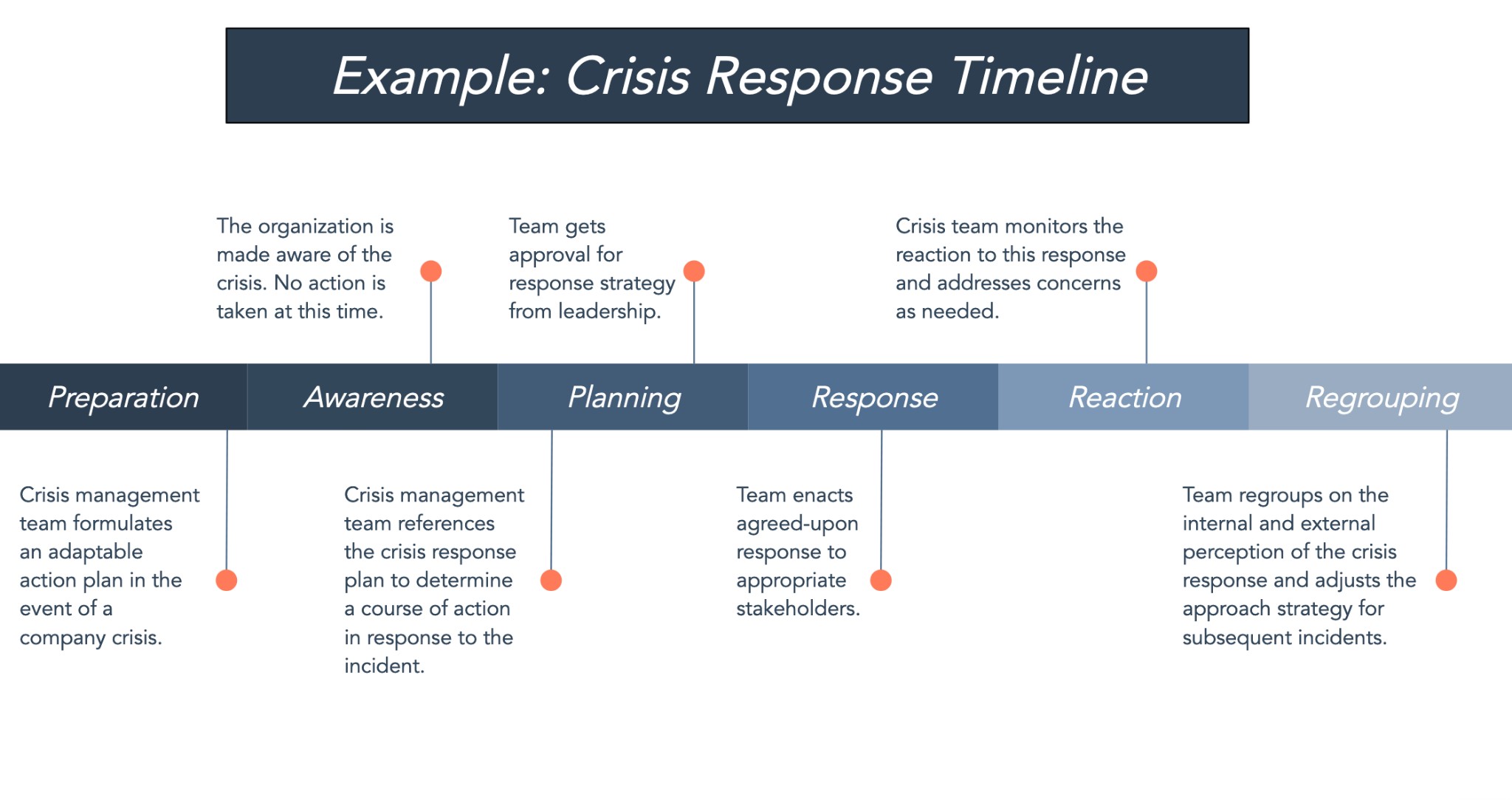
Historical Timeline

Task Project Timeline
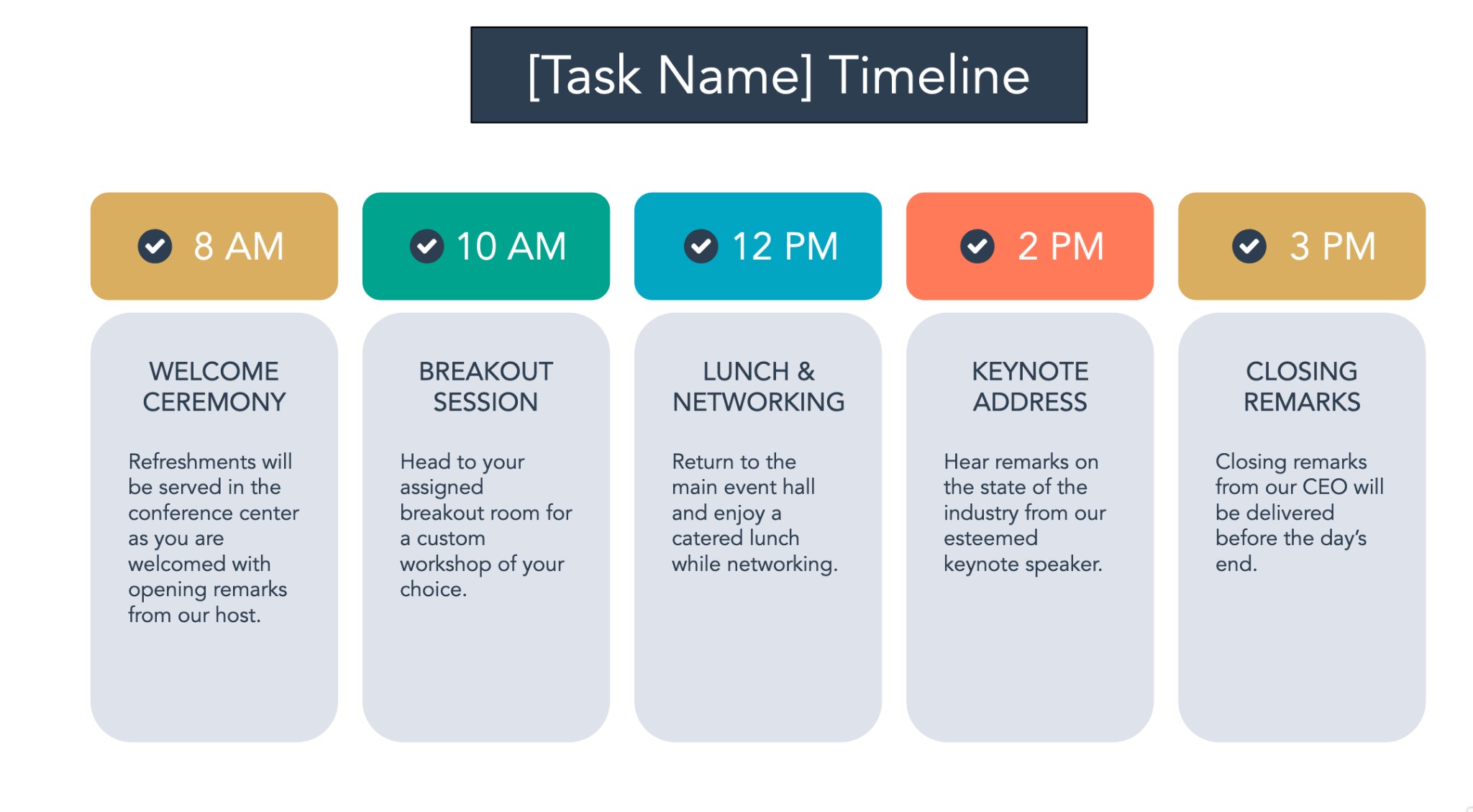
Meeting Project Timeline
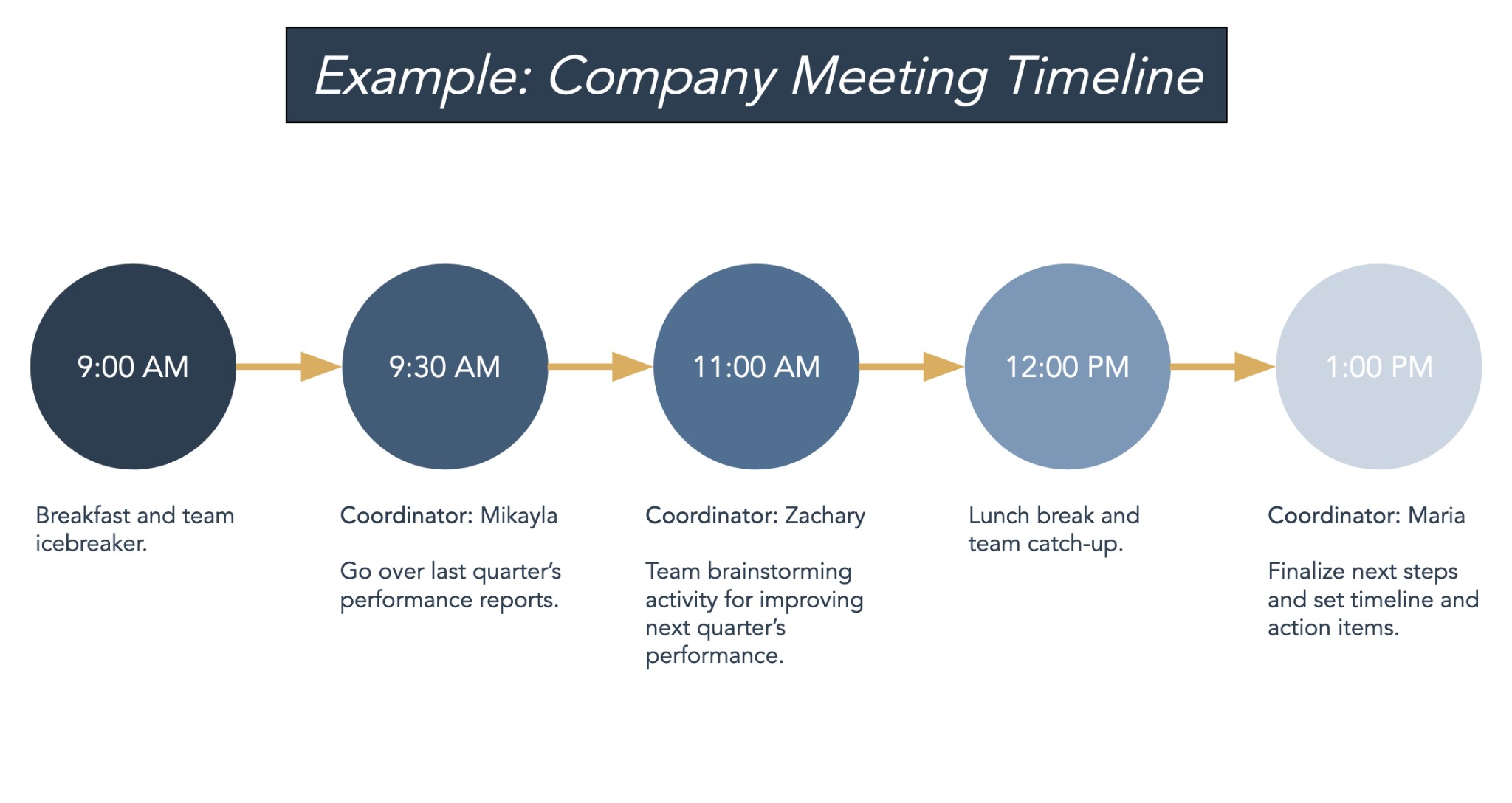
Need as many templates as you can get? Download all of these project timelines (and more) for free. With the right timelines in hand, it's easy to keep everyone up to date and informed. Now all you have to do is make sure your projects stay on schedule. Good luck!


